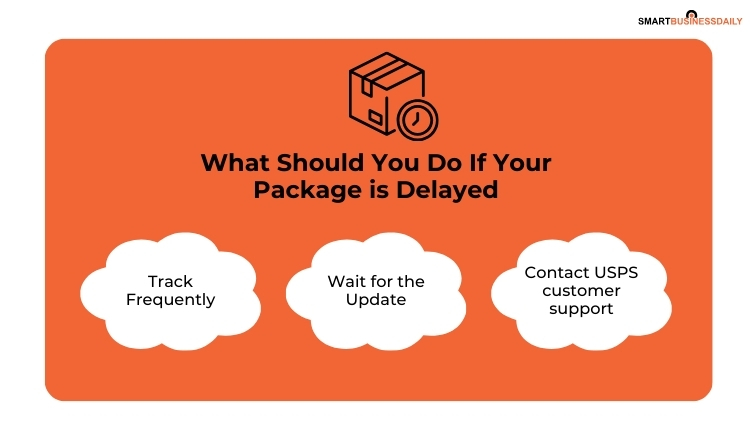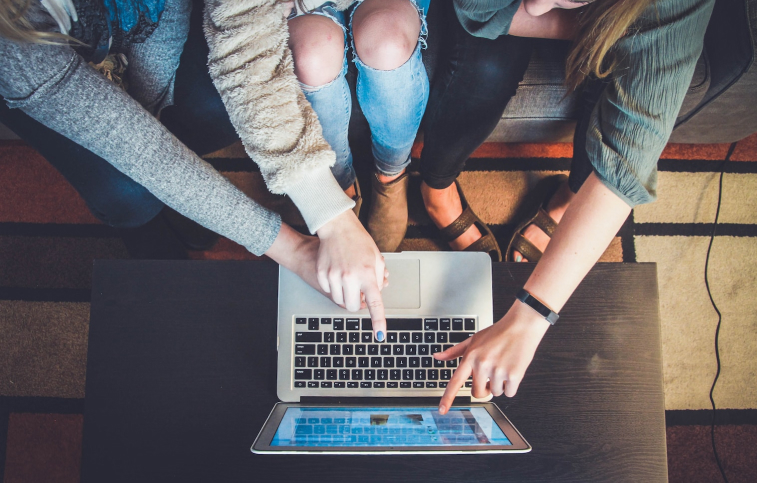Moving Through Network USPS: Know Where Your Business Delivery is!
6 Mins Read
Published on: 06 November 2024
Last Updated on: 12 September 2025

- What Does “Moving Through Network USPS” Mean?
- Breakdown of a Package Delivery: The Key Facilities and Checkpoints of USPS
- How Long After “Moving Through Network USPS” Should You Wait For Your Package?
- What Should You Do If Your Package is Delayed?
- Track Frequently
- Wait for the Update:
- Contact USPS customer support.
- What Are The Reasons For Delay In Your Package?
- Few Scans Along the Route:
- Bad Weather Conditions
- Large Quantities of Packages
- Mechanical or Transportation Problems
- Shipments Overseas
- Lengthy Distance
- What To Do If Your Package Is Stuck?
So, you have a business, and your client has placed an order. After you ship it from your end, you and your customer will get a “Moving Through Network” notification from USPS.
But, “USPS moving through network arriving late”—what does that mean? Where exactly is your package? When will your customer receive it? There can be several questions like these on your mind.
Knowing the answer to these questions can help you navigate the questions your customer might have concerning their package.
So, if you want to learn the meaning of Moving Through Network USPS, you have reached the right place! Therefore, keep on reading this blog till the end to learn more…
What Does “Moving Through Network USPS” Mean?

Moving a package or postal item from one place to another inside the USPS network is called “moving through the network” in USPS.
This covers the many transportation phases, such as sorting, loading, and unloading, as well as the various vehicles utilized, like trucks, airplanes, and trains.
Customers may trace their package’s progress as it travels through the network with USPS’s tracking information, which also gives them an expected delivery date and guarantees that their mail will reach its destination quickly and efficiently.
Breakdown of a Package Delivery: The Key Facilities and Checkpoints of USPS

While it is easy for us to blame the logistical and postal services, you must know a few things about the various checkpoints! Yes, there are several stages that packages go through before reaching their destination.
Irrespective of whether you choose FCA incoterms in a trading business or are simply waiting for your shipment to get delivered to your customer, understanding the flow of your package helps.
While you get the notification if “moving through the network” from USPS, calm down and go through this:
Here are the most important checkpoints that any package has to go through:
1. Sorting Centers: These massive warehouses swiftly transport parcels along conveyor belts using automated machinery and optical scanners. To guarantee that your item reaches schedule, the objective is to read addresses and route them in the proper directions correctly.
2. Network Distribution Centers (NDCs): Trucks from various sorting facilities deliver loaded shipments to these large logistical hubs. For your shipment, efficient loading and sorting into departing trucks maintains the network’s seamless operation.
3. Processing and Distribution Centers (PDCs): These sizable establishments handle a lot of mail and parcels, frequently providing temporary storage during busy times. Imagine them as enormous warehouses, always bringing packages to keep the network running.
4. Local Post Offices: These welcoming local hubs handle the final leg of your package’s trip. To ensure that items reach their destination promptly and safely, postal workers sort and prepare packages for local delivery. Your local post office is the last stop before your shipment arrives at its destination.
How Long After “Moving Through Network USPS” Should You Wait For Your Package?
When you send USPS packages to domestic locations, you can be assured that they will arrive in 1–8 business days. However, that is not always the case.
Generally, the type of USPS service you choose will determine when your shipment arrives. For an expected delivery time, see the guide below:
- Priority Mail: 1 to 3 business days
- Priority Mail Express: With delivery even on Sundays, takes 1–5 business days (by 6 p.m.)
- First-class mail: Takes 1 to 2 days
- Media Mail: 2 to 8 working days
- USPS Ground Advantage: 2 to 5 business days
- International Shipping: Depending on the delivery method and location, international shipping might take anywhere from one to ten business days.
What Should You Do If Your Package is Delayed?

Well, the first thing you should NOT do when you see your package is delayed is Panic. Yes, I understand that it is about money and the customer experience, but technically, once you ship the package, it is not in your hands. And this is something that you must understand.
So, what should you do instead? Here are a few things:
Track Frequently
For most of its packages, USPS provides free tracking. To get the most recent information, go to the USPS website and type the 22-digit tracking number into the search bar. On a USPS receipt or an email from the sender confirming your order, look for your tracking number.
Wait for the Update:
Unexpected delays do occur, so allow enough time for it to arrive. In a similar vein, packages are frequently inadvertently scanned early. After this period, contact USPS or the sender for assistance if your package hasn’t arrived.
Contact USPS customer support.
If your parcel has not yet arrived, contact Priority Mail Express by phone or email at 6 p.m. local time on the guaranteed delivery day.
You can contact customer service for other items, such as Priority Mail, First-Class Mail, and USPS Ground Advantage, five days or more after the sending date.
Still, you should wait at least a week before your delivery arrives before contacting them. You should contact Media Mail, Parcel Select, Library Mail, Bound Printed Matter, Periodicals, and USPS Marketing at least 14 days after the shipping date.
If it contains dangerous materials or live animals, call USPS Ground Advantage at least 14 days after the package is mailed.
What Are The Reasons For Delay In Your Package?

“Why has my package not reached me yet?”
If you have a business (big or small), this is a question that you must have heard from your clients at least once (unless you are fortunate!) So, to sound logical and informed, you must know why your package is delayed.
You see, there are several reasons behind this. For instance, it might be because of the distance your package must travel or the amount of mail being processed.
Furthermore, it can also be because of any delays or disruptions brought on by bad weather or other unanticipated events.
These can be some of the many variables that can affect how quickly your package moves through the USPS network.
The shipping option that you have selected also impacts delivery time. For instance, priority and express shipping usually offer quicker arrival periods than regular shipping.
Here are the most common reasons that you should be aware of:
Few Scans Along the Route:
To activate its unique tracking number, all the parcels are first scanned into the USPS system when it is initially mailed. However, there may occasionally be few scanners along the network’s path, particularly if they move between sites from truck to truck.
Bad Weather Conditions
Bad weather is a tried-and-true method of postponing anything. A strong storm may result in hazardous driving conditions or damage USPS facilities. These problems could cause packages to arrive later than expected, resulting in fewer tracking updates.
Large Quantities of Packages
The USPS receives many packages during the busiest holiday, such as Christmas. Despite the steps taken by USPS, such as providing Sunday delivery, pop-up locations, and additional staff hours, parcels may have to wait longer between screenings before reaching their final destination.
Mechanical or Transportation Problems
Regretfully, you can never predict when a delivery vehicle or conveyor belt may break down. A package may not arrive within the anticipated delivery window due to mechanical or transportation problems.
Shipments Overseas
If your item is delayed because of improperly completed customs paperwork, you might have to wait longer if you’re expecting a package from abroad. Make sure that you have correctly completed and filed all of your documents.
Lengthy Distance
It takes a long time for USPS packages to get to you. From distribution centers, sorting hubs, your neighborhood post office, and your doorstep, packages move between hands and places. Sometimes, a procedure error can cause your item to be delayed. But don’t worry, it’s still coming.
What To Do If Your Package Is Stuck?
Well, being proactive can help you to reduce the pain of delayed package. However, you just keep your patience, it is essential. Here’s what you can do:
- Give it a little time: Before you make any sort of hasty decision, you must give yourself a few more extra days after the expected date. There can be occasional lags in the network.
- Real-time tracking: This specific feature allows you to understand where and why your package is stuck. This can further help you to get a real-time insight along with proactive alerts. This way you can get more control over the deliveries.
- Use the USPS tracking resources: Apart from the tracking link, USPS also keeps you updated about the package. You get a very comprehensive information such as most recent scan or the possible causes for the delay.
- Talk to the USPS customer service: Always try to talk your agents. They can help you to understand the particular circumstances related to the package wile providing useful solutions.
Read More:


















Comments Are Closed For This Article